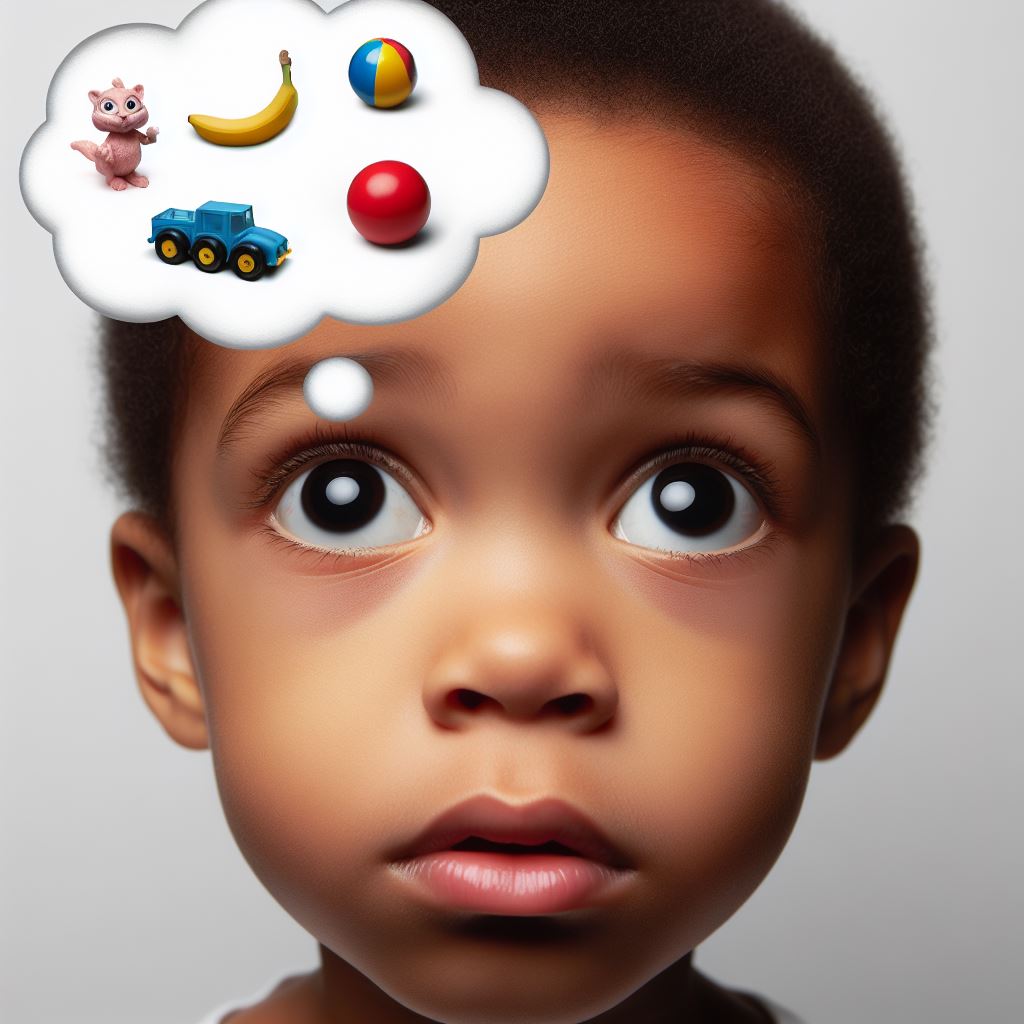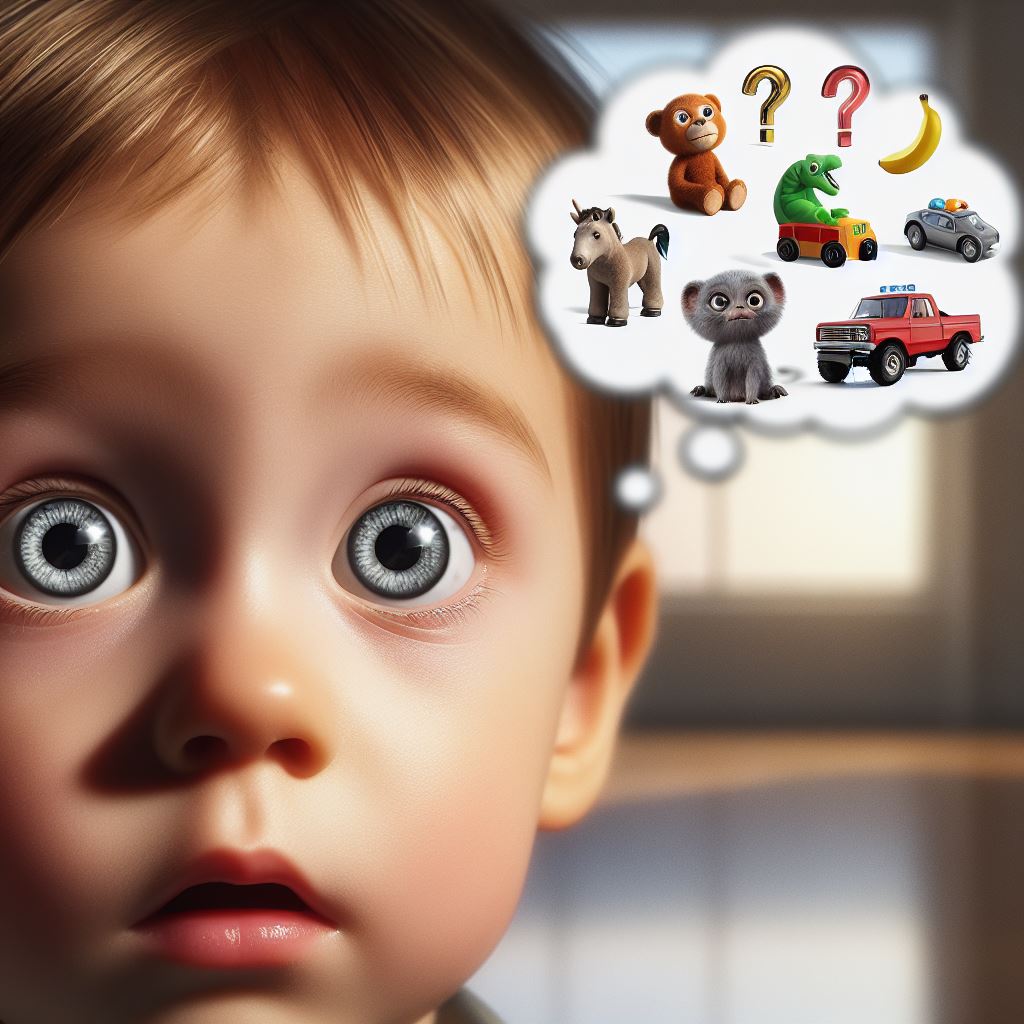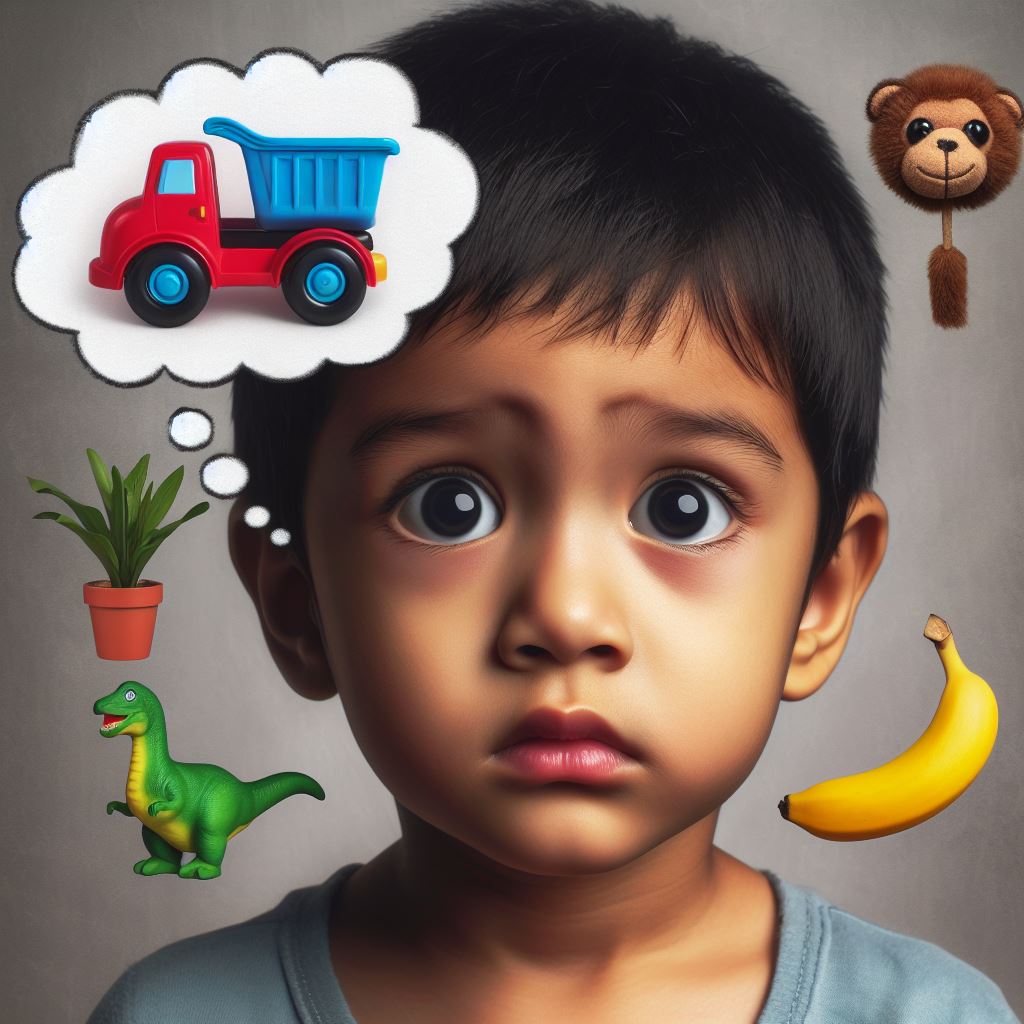Your cart is currently empty!
Blog

What Is Paranoid Personality Disorder?
Paranoid personality disorder (PPD) is a mental health condition that affects how a person thinks and behaves towards others. People with PPD have a persistent and pervasive pattern of distrust and suspicion, often interpreting others’ motives as malicious or harmful. They may also experience psychotic symptoms, such as delusions and hallucinations, that reinforce their distorted beliefs.
PPD can cause significant impairment in social, occupational, and personal functioning, as well as increased risk of depression, anxiety, substance abuse, and suicidal behavior. PPD is estimated to affect about 2.3% of the general population and is more common in men than in women.
The exact causes of PPD are not well understood, but some possible factors include genetic predisposition, early childhood trauma, cultural influences, and brain abnormalities. PPD is often associated with other mental health conditions, such as schizophrenia, borderline personality disorder, delusional disorder, and avoidant personality disorder.
The main symptom of PPD is a chronic and unjustified mistrust of others, even when there is no evidence or reason to support it. People with PPD may exhibit some or all of the following behaviors:
- They are constantly on guard for signs of betrayal, deception, or exploitation by others.
- They are reluctant to confide in or share personal information with anyone, fearing it will be used against them.
- They are hypersensitive to criticism, insults, or perceived slights, and may react angrily or with hostility.
- They hold grudges and do not forgive easily.
- They are suspicious of the loyalty or trustworthiness of their friends, family members, partners, or colleagues.
- They may accuse others of having hidden agendas or ulterior motives, or of plotting against them or conspiring to harm them.
- They may believe that they are the target of persecution, harassment, or discrimination by others or by institutions (such as the government, the media, or the legal system).
- They may have delusions of grandeur or persecution, such as believing that they have special abilities or powers, or that they are being followed, watched, or monitored by enemies.
- They may experience hallucinations of voices or images that confirm their paranoid beliefs or threaten them.
Some examples of how PPD can affect a person’s life are:
- A person with PPD may refuse to seek medical help for a serious condition, fearing that the doctors or nurses are trying to poison them or implant devices in their body.
- A person with PPD may isolate themselves from their family and friends, believing that they are all in league against them or have been replaced by impostors.
- A person with PPD may quit their job or drop out of school, thinking that their boss or teachers are sabotaging their performance or setting them up for failure.
- A person with PPD may become violent or aggressive towards others whom they perceive as threatening or hostile, even if they are innocent bystanders or authority figures.
The diagnosis of PPD is based on clinical criteria and a thorough psychological evaluation. There is no specific test for PPD, but some tools that may be used to assess the severity and impact of the symptoms include:
- The Structured Clinical Interview for DSM-5 (SCID-5)
- The Minnesota Multiphasic Personality Inventory (MMPI)
- The Paranoid Personality Disorder Scale (PPDS)
- The Paranoid Thoughts Scale (PTS)
The treatment of PPD can be challenging due to the nature of the disorder and the resistance of the patients to seek help or trust the therapists. However, some options that may be helpful include:
- Cognitive-behavioral therapy (CBT), aims to identify and challenge the distorted thoughts and beliefs that fuel the paranoia and teach coping skills to manage emotions and behaviors.
- Antipsychotic medication can reduce the intensity and frequency of psychotic symptoms such as delusions and hallucinations.
- Psychoeducation involves providing information and support to the patients and their families about the disorder and its treatment.
- Social skills training helps to improve the communication and interpersonal skills of the patients and enhance their social functioning.
PPD is a serious and chronic condition that can cause significant distress and impairment in various aspects of life. However, with proper diagnosis and treatment, some people with PPD can achieve a better quality of life and reduce their suffering.
One question that may arise when learning about PPD is how it differs from obsessive-compulsive disorder (OCD). OCD is another mental health condition that involves recurrent and intrusive thoughts (obsessions) and repetitive behaviors (compulsions) that aim to reduce anxiety caused by the obsessions. OCD can also cause impairment in social, occupational, and personal functioning. The main difference between PPD and OCD is that people with PPD have paranoid beliefs that are not based on reality, while people with OCD have insight into the irrationality of their obsessions and compulsions. People with PPD are convinced that others are out to harm, deceive, or exploit them, and they often interpret benign events as malicious or threatening. People with OCD, on the other hand, recognize that their fears and rituals are excessive and unreasonable, but they feel unable to control them. Another difference is that people with PPD tend to isolate themselves from others and avoid seeking help, while people with OCD may seek professional treatment or support from family and friends.
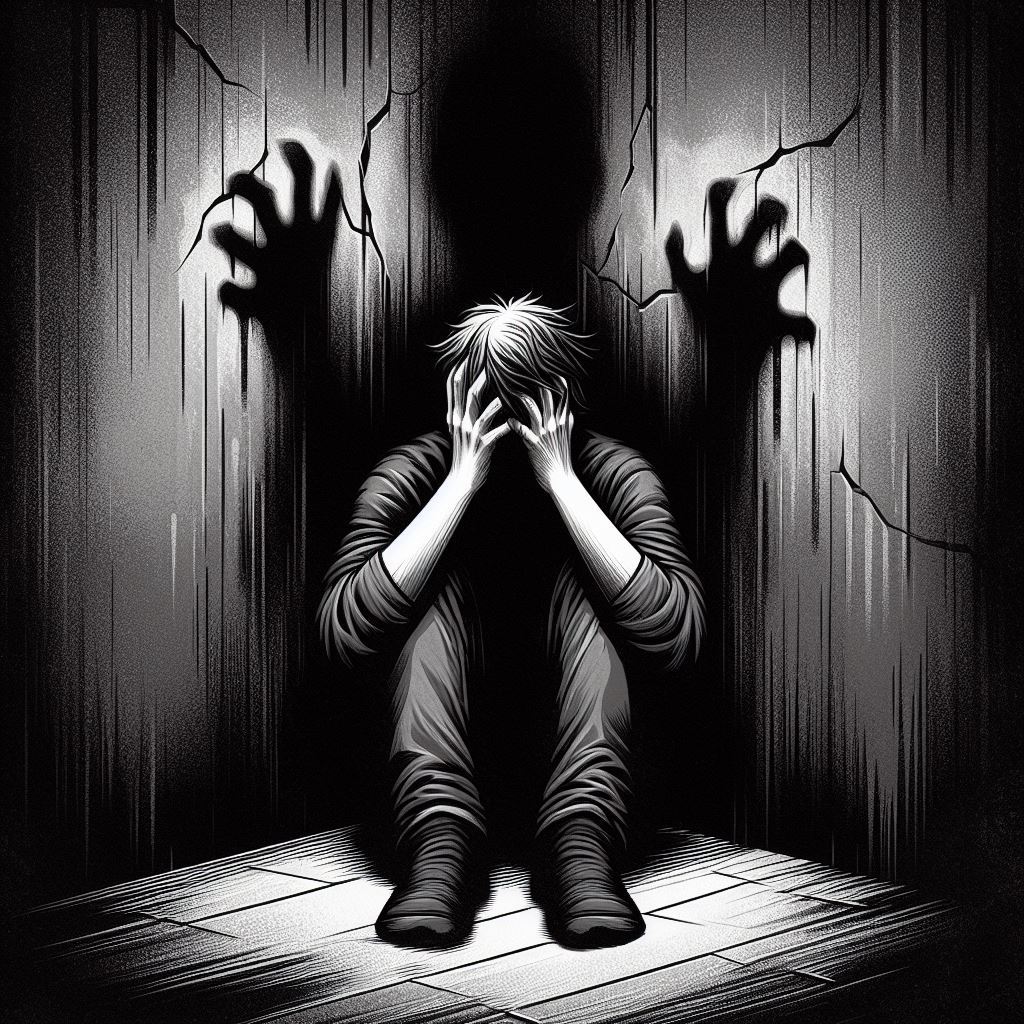
Paranoid personality disorder (PPD) is a mental health condition characterized by persistent and pervasive mistrust and suspicion of others, even when there is no reason to be suspicious. People with PPD may feel constantly on guard, believe that others are out to harm or deceive them, and have difficulty trusting or confiding in anyone. They may also interpret benign remarks or events as malicious or threatening, and react with anger or hostility.
The early signs and symptoms of PPD may include:
- Excessive doubt or suspicion of others’ motives or intentions
- Fear of being exploited, harmed, or betrayed by others
- Reluctance to share personal information or confide in anyone
- Hypersensitivity to criticism or perceived insults
- Holding grudges and being unforgiving of perceived slights
- Difficulty relaxing or letting go of worries
- Perceiving hidden meanings or threats in ordinary comments or situations
- Having rigid or extreme beliefs that are not supported by evidence
- Being overly self-reliant and independent
- Having trouble working or cooperating with others
Recognizing and seeking help for PPD can be challenging, as people with this condition may not acknowledge that they have a problem or may distrust mental health professionals. However, early recognition and intervention can lead to better outcomes, as PPD can cause significant distress and impairment in various aspects of life, such as relationships, work, and social functioning.
One of the main goals of treatment for PPD is to help the person develop more realistic and positive views of themselves and others and to reduce their fear and paranoia. Treatment may involve psychotherapy, medication, or a combination of both. Psychotherapy can help the person identify and challenge their distorted thoughts and beliefs, learn coping skills and strategies to manage their emotions and behaviors and improve their self-esteem and communication skills. Medication can help reduce the anxiety, agitation, or depression that may accompany PPD.
The role of family and social support in the treatment of PPD is crucial, as their involvement can help improve the patient’s engagement in therapy, provide emotional and practical assistance, and foster a more trusting and secure environment. Family and friends can also benefit from education and counseling on how to understand and cope with PPD, how to communicate effectively and respectfully with the person, how to avoid reinforcing their paranoia or provoking their hostility, and how to set healthy boundaries and expectations.
PPD can have a significant impact on relationships, as people with this condition may have difficulties in forming and maintaining intimate connections. They may isolate themselves from others, avoid intimacy or closeness, accuse their partners of infidelity or disloyalty, or become controlling or abusive. They may also struggle to make friends, socialize, or participate in group activities. As a result, they may experience loneliness, rejection, or alienation.
To illustrate the effects of PPD on individuals’ lives, here are some examples of real-life scenarios or case studies:
- John is a 45-year-old accountant who has been married for 20 years. He has always been suspicious of his wife’s fidelity, even though she has never given him any reason to doubt her. He constantly checks her phone, email, and social media accounts for signs of cheating. He also accuses her of flirting with her co-workers, friends, or strangers. He often gets angry and verbally abusive when she tries to explain herself or defend herself. He refuses to go to counseling with her or seek help for himself.
- Lisa is a 32-year-old teacher who has been working at the same school for 10 years. She believes that her colleagues are jealous of her success and are plotting to sabotage her career. She does not trust anyone at work and keeps to herself. She does not share any information about her personal life or interests with anyone. She also thinks that her students are disrespectful and ungrateful. She often snaps at them or gives them harsh punishments for minor mistakes. She has received several complaints from parents and administrators about her behavior.
- Sam is a 28-year-old engineer who has recently moved to a new city for a job opportunity. He has no friends or family in the area and feels lonely and isolated. He tries to join some online groups or forums related to his hobbies or interests, but he soon becomes paranoid that the other members are mocking him, lying to him, or trying to scam him. He deletes his accounts and stops interacting with anyone online. He also avoids going out in public or meeting new people. He spends most of his time at home alone.

Diversity and Representation in Games: A Critical Analysis
Video games are a powerful medium of entertainment, education, and expression. They can immerse players in rich and diverse worlds, challenge them with complex problems, and inspire them with compelling stories. However, video games also have a responsibility to reflect the diversity of their audiences and the society they are part of. In this blog post, I will explore the issue of representation in video games, focusing on three aspects: the gender disparity in the gaming industry, the portrayal of women and minorities in games, and the need for more diverse characters and narratives.
The Gender Disparity in the Gaming Industry
One of the main challenges facing the gaming industry is the lack of gender diversity among its workforce. According to a 2019 report by the International Game Developers Association (IGDA), only 24% of game developers identified as female, while 74% identified as male. This gender gap has implications for the types of games that are produced, the perspectives that are represented, and the experiences that are catered to. For instance, a 2018 study by Quantic Foundry found that female gamers preferred genres such as simulation, casual, puzzle, and adventure, while male gamers preferred genres such as strategy, action, shooter, and role-playing. However, these preferences do not necessarily match the availability of games in the market. For example, a 2019 analysis by Statista showed that action was the most popular genre among game releases on Steam, accounting for 21.2% of all games, while simulation was only 5.8%. This suggests that there is a mismatch between the demand and supply of games for different genders.
The Portrayal of Women and Minorities in Games
Another issue related to representation in video games is the portrayal of women and minorities in games. Historically, video games have been dominated by white male protagonists, often featuring stereotypical or sexualized depictions of women and people of color. For example, a 2016 study by Williams et al. found that only 10.7% of playable characters in 571 games were female, while 85.2% were male. Moreover, only 2.7% of playable characters were black, while 76.2% were white. These numbers indicate a severe underrepresentation of women and minorities in video games, especially considering that they make up a significant portion of the gaming population. According to a 2020 report by the Entertainment Software Association (ESA), 41% of gamers in the US were female, while 39% were people of color.
The Need for More Diverse Characters and Narratives
The lack of diversity and representation in video games not only affects the gaming industry itself but also its social and cultural impact. Video games can influence how players perceive themselves and others, shape their attitudes and values, and foster empathy and understanding. Therefore, it is important to have more diverse characters and narratives that reflect the reality and complexity of human diversity. By creating more inclusive and respectful representations of women and minorities in video games, game developers can not only expand their audience and market potential but also contribute to social change and justice.
The Future of Ethical Gaming: A Vision for Tomorrow
As video games become more advanced and pervasive, they face new ethical challenges and opportunities. In this blog post, I will speculate on the future of ethical gaming, discussing how emerging trends like AI and blockchain could influence the ethical landscape of the gaming industry.
AI and Ethical Gaming
Artificial intelligence (AI) is one of the most promising and disruptive technologies in the gaming industry. AI can enhance various aspects of game design and development, such as graphics, sound, gameplay,
storytelling, personalization, and accessibility. However, AI also poses ethical risks and dilemmas for game developers and players alike.Some of the ethical issues with AI in gaming are:
- How can game developers ensure that AI-generated content is appropriate and respectful for different audiences and cultures?
- How can game developers protect the privacy and security of players’ data when using AI to collect
and analyze their behavior and preferences. - How can game developers prevent or mitigate the potential harms of AI-enabled cheating,
hacking, or manipulation in online games? - How can game developers balance the trade-offs between realism and morality when creating
AI-driven characters or scenarios?
These are some of the questions that game developers will have to grapple with as they adopt AI in their games. To address these issues, game developers will need to adopt ethical principles and guidelines for AI use in games, such as transparency, accountability, fairness, safety, privacy, and human dignity.

Congo Cobolt Crisis
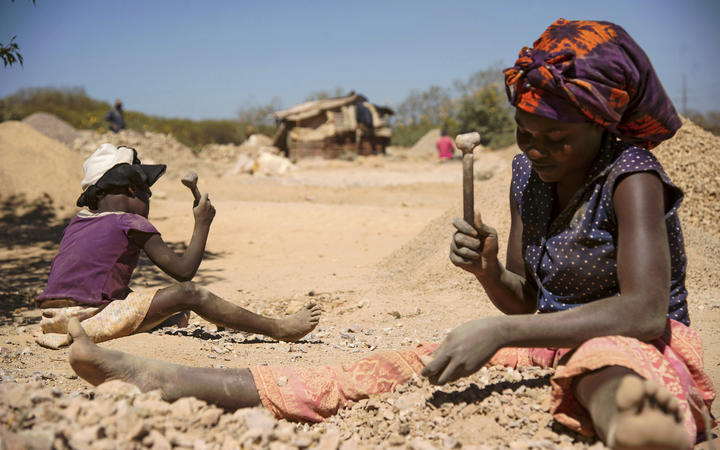
Cobalt is a key element in the production of batteries, magnets, and other components for semiconductor technologies. However, the extraction of cobalt often involves unethical and illegal practices, such as child labor, human rights violations, and environmental degradation. According to Amnesty International, more than half of the world’s cobalt supply comes from the Democratic Republic of Congo (DRC), where armed groups and militias control many mines and force workers to operate under harsh and dangerous conditions. Children as young as seven are exposed to physical and psychological harm, as well as the risk of fatal accidents and diseases.
ECOSYSTEM
How Do We Adress This Issue?
As a company that values ethics and social responsibility, Ethics Professionals Game Corporation (EPGC) condemns these practices and expresses its solidarity with the people of Congo who suffer from this exploitation. We believe that cobalt mining should be regulated by international standards and monitored by independent organizations to ensure the protection of human rights and the environment. We also support the efforts of local communities and civil society groups to demand justice and accountability from the perpetrators of these abuses.


In addition, we are committed to helping the people of Congo in their struggle for dignity and development. We donate a portion of our profits to humanitarian and development organizations that provide essential services and assistance to the affected populations. One of these organizations is the International Rescue Committee, an international humanitarian aid organization with a long history of supporting people displaced by war, persecution, or natural disasters. The IRC was founded in 1933 as the International Relief Association, at the request of Albert Einstein, to assist German victims and enemies of Nazism. 1942 it merged with the Emergency Rescue Committee, which was formed to rescue European refugees trapped in Vichy France. Since then, the IRC has expanded its operations to over 40 countries, providing relief, rehabilitation, protection, post-conflict development, and resettlement services to millions of needy people. The IRC also works to improve the health, safety, education, economic well-being, and power of people affected by the crisis. We are also sponsoring educational and vocational programs that empower young people and women to pursue their dreams and aspirations. We are also advocating for political and economic reforms that can foster peace and stability in the region. We believe that these actions will not only benefit our company but also contribute to a more sustainable and peaceful world.
The ethics of cobalt mining and child labor concerning parts in semiconductor technologies is a complex and urgent issue that requires global attention and action. Cobalt is a key component of lithium-ion batteries, which are used in electric vehicles, smartphones, laptops, and other devices. However, the majority of the world’s cobalt supply comes from the Democratic Republic of the Congo (DRC), where many mines are unregulated, unsafe, and exploitative. According to various sources, an estimated 40,000 children are working in dangerous cobalt mines in the DRC, where they face exposure to toxic dust, physical injuries, violence, and abuse. These children are paid as little as $1.5-$2 a day for 12-hour shifts or longer while risking their health and education.
As a company that values ethics, human rights, and social responsibility, Ethics Professionals Game Corporation (EPGC) condemns the use of child labor in cobalt mining and expresses its support and solidarity for the people of Congo who suffer from this injustice. EPGC is committed to ensuring that its products do not contribute to the exploitation of children or the environmental degradation caused by cobalt mining. Therefore, EPGC has taken the following steps to address this issue:
- EPGC has joined the Responsible Cobalt Initiative (RCI), a multi-stakeholder platform that aims to improve the governance, transparency, and sustainability of the cobalt supply chain in the DRC. The RCI was initially proposed by upstream and downstream enterprises of the global cobalt supply chain and relevant organizations in 2016. The RCI promotes cooperation with the government of the DRC, civil society, and affected local communities to take and support actions that address the risks and challenges in the cobalt supply chain. The RCI also implements the OECD Due Diligence Guidance for Responsible Supply Chains of Minerals from Conflict-Affected and High-Risk Areas.
- EPGC has adopted a due diligence policy that requires its suppliers to trace the origin of their cobalt and verify that it does not involve child labor or human rights violations. EPGC also conducts regular audits and inspections of its suppliers to ensure compliance with this policy.
- EPGC has invested in research and development of alternative battery technologies that can reduce or eliminate the dependence on cobalt, such as solid-state batteries, lithium-sulfur batteries, sodium-ion batteries, or hydrogen fuel cells.
- EPGC has donated to various organizations that work to improve the living conditions, education, and empowerment of children and communities affected by cobalt mining in the DRC, such as Amnesty International, UNICEF, and Save the Children.
EPGC believes that these actions are not only ethical but also beneficial for its business, as they enhance its reputation, customer loyalty, and social impact. EPGC also calls on other companies, governments, and consumers to join the efforts to end child labor in cobalt mining and create a greener and fairer future for all.
How can you help fight child labor in cobalt mining?
As a consumer, you can also play a role in fighting child labor in cobalt mining by making informed choices about your purchases. Here are some ways you can help:
- Check the labels or websites of your products to see if they disclose their cobalt sources or their due diligence policies. If they do not, contact them and ask them to do so.
- Choose products that use less or no cobalt, such as those with alternative battery technologies or renewable energy sources.
- Support organizations that advocate for human rights, environmental protection, and social justice in the DRC, such as Amnesty International, UNICEF and Save the Children. You can donate money, sign petitions, join campaigns, or volunteer your time and skills.
- Educate yourself and others about the issue of child labor in cobalt mining and raise awareness among your family, friends, and community.
What are some alternative battery technologies?
Some alternative battery technologies that can reduce or eliminate the dependence on cobalt are:
- Solid-state batteries: These batteries use solid electrolytes instead of liquid ones, which can improve safety, energy density, and lifespan. They can also operate at higher temperatures and lower voltages than lithium-ion batteries.
- Lithium-sulfur batteries: These batteries use sulfur as a cathode material instead of cobalt, which can lower costs, increase capacity, and reduce environmental impact. However, they also face challenges like low cycle life and poor stability.
- Sodium-ion batteries use sodium instead of lithium as an anode material, making them cheaper, more abundant, and less flammable than lithium-ion batteries. However, they also have lower energy density and performance than lithium-ion

Why does time feel like it moves faster as you get older? How does this relate to trauma caused by the pandemic and what other sort of trauma did the pandemic cause with the younger generations

Many people have experienced a sense of time distortion during the pandemic, feeling like days, weeks, and months have blurred together or passed by too quickly. This phenomenon is not new, however. It is well-known that as we age, our perception of time changes and we tend to feel like time is speeding up. But why does this happen and what are the implications for our mental health?
One possible explanation for why time seems to move faster as we get older is that we have fewer novel experiences and more routine activities. When we encounter something new or exciting, our brain pays more attention and encodes more details in our memory. This makes the event seem longer and more memorable in retrospect. On the other hand, when we do the same things over and over again, our brain filters out the redundant information and stores less in our memory. This makes the event seem shorter and less memorable in retrospect.
Another possible explanation for why time seems to move faster as we get older is that we use different reference points to measure time. When we are young, we have fewer life experiences and a shorter perspective of time. A year seems like a long time because it is a large fraction of our life span. As we grow older, we have more life experiences and a longer perspective of time. A year seems like a short time because it is a small fraction of our life span.
The pandemic has disrupted both of these factors that influence our perception of time. On one hand, the pandemic has reduced our opportunities for novel experiences and increased our exposure to routine activities. We may feel like we are stuck in a loop of doing the same things every day, with little variation or excitement. This can make time seem to fly by without leaving much trace in our memory. On the other hand, the pandemic has also introduced a lot of uncertainty and stress into our lives, which can make time seem to drag on or stand still. We may feel like we are waiting for something to change or improve, without knowing when or how it will happen. This can make time seem to stretch out or stop in our minds.
The pandemic has also affected different generations in different ways, creating different types of trauma and challenges. For older generations, the pandemic may have triggered feelings of loss, grief, isolation, and mortality. Due to the virus or the lockdown measures, they may have lost loved ones, friends, jobs, or social connections. They may have faced increased health risks or difficulties accessing medical care. They may have felt more vulnerable or helpless in the face of an invisible threat. For younger generations, the pandemic may have disrupted their education, career, socialization, and development. They may have missed out on important milestones, opportunities, experiences, or relationships due to the virus or the lockdown measures. They may have faced increased anxiety, depression, loneliness, or boredom due to the lack of stimulation, interaction, or support. They may have felt more frustrated or hopeless about their prospects.
The pandemic has been a traumatic event for many people across different age groups, but it has also been an opportunity for resilience and growth. It is important to acknowledge how the pandemic has affected our perception of time and our mental health and to seek help if needed. It is also important to find ways to cope with the challenges and changes that the pandemic has brought and to create meaning and purpose in our lives. Some possible strategies include:
- Seeking novelty and variety in our daily routines, such as trying new hobbies, skills, activities, or foods.
- Setting goals and plans for the future, such as learning something new, pursuing a passion project, or preparing for a career change.
- Maintaining social connections and support networks, such as reaching out to friends, family, or community members online or offline.
- Practicing gratitude and optimism, such as appreciating what we have, celebrating our achievements, and looking forward to positive outcomes.
- We are taking care of ourselves physically and emotionally, such as getting enough sleep, exercise, nutrition, and relaxation.
Time is a precious resource that we cannot control or reverse, but we can influence how we perceive and use it. By being mindful of how the pandemic has affected our sense of time and by adopting healthy coping strategies, we can make the most of our time and live more fully and meaningfully.
How can I cope with pandemic trauma?
The pandemic has been a traumatic event for many people, affecting their sense of time, mental health, and well-being. If you are feeling overwhelmed, distressed, or hopeless due to the pandemic, you are not alone. There are ways to cope with the pandemic trauma and to heal from its effects. Here are some suggestions:
- Seek professional help if needed. If you are experiencing symptoms of post-traumatic stress disorder (PTSD), such as flashbacks, nightmares, avoidance, hypervigilance, or negative mood, you may benefit from therapy or medication. Some online resources and hotlines can provide support and guidance.
- Talk to someone you trust. Sharing your feelings and experiences with a friend, family member or counselor can help you process your emotions and reduce your stress. You can also join a support group or a community of people who have gone through similar situations.
- Practice self-care. Taking care of your physical and emotional needs can help you cope with the pandemic trauma and improve your mood. Make sure you get enough sleep, exercise, nutrition and relaxation. Avoid alcohol, drugs, or other substances that can worsen your symptoms or impair your judgment.
- Engage in positive activities. Doing things that bring you joy, satisfaction or meaning can help you cope with the pandemic trauma and enhance your well-being. You can try new hobbies, skills, activities, or foods. You can set goals and plans for the future. You can express yourself creatively or spiritually.
- Cultivate gratitude and optimism. Focusing on the positive aspects of your life and situation can help you cope with the pandemic trauma and increase your resilience. You can appreciate what you have, celebrate your achievements, and look forward to positive outcomes. You can also practice gratitude exercises, such as writing down three things you are grateful for daily.
- Seek novelty and variety. Breaking the monotony and routine of your daily life can help you cope with the pandemic trauma and stimulate your brain. You can explore new places, cultures, or perspectives. You can challenge yourself to learn something new or to do something differently.
- Maintain social connections. Staying in touch with your friends, family, and community can help you cope with the pandemic trauma and provide you with support and comfort. You can reach out to them online or offline, depending on the safety measures and restrictions in your area. You can also volunteer or help others who are in need.
The pandemic has been a traumatic event for many people, but it has also been an opportunity for resilience and growth. By following these suggestions, you can cope with the pandemic trauma and live more fully and meaningfully.

What is a social construct and explain social constructionism
A social construct is a complex concept or practice shared by a society or group, not arising from any natural or innate source but built on the assumptions upheld, usually tacitly, by its members. For example, countries, money, and virginity are all social constructs. They exist because humans agree that they exist and assign them meaning and value.
Social constructionism is a theory that explores how humans create such constructs to make sense of the objective world. It argues that reality is not given, but rather constructed through human interaction and interpretation. Social constructionism also examines how social constructs can change over time and vary across cultures and contexts.
One of the main goals of social constructionism is to analyze how social phenomena are created, institutionalized, and made into tradition by humans. It also aims to challenge the taken-for-granted assumptions about reality and expose the power dynamics and inequalities that are embedded in them.
Some examples of social phenomena that are studied by social constructionists are race, gender, sexuality, class, religion, disability, and mental illness. These are not fixed or natural categories, but rather fluid and contingent ones that are shaped by historical, cultural, and political forces. Social constructionists question the origins, meanings, and implications of these phenomena and how they affect human lives.
Social constructionism is not a single unified theory, but rather a diverse and interdisciplinary field that draws from various disciplines such as sociology, psychology, anthropology, philosophy, and linguistics. There are different branches and perspectives within social constructionism, such as postmodernism, feminism, critical theory, discourse analysis, and narrative analysis. Each of these approaches has its assumptions, methods, and contributions to the study of social reality.
Social constructionism is not without criticism. Some of the common critiques are that it is too relativistic, nihilistic, or idealistic. Some critics argue that social constructionism denies the existence of objective reality or universal truths. Others contend that social constructionism ignores the role of material conditions or biological factors in shaping human experience. Still, others claim that social constructionism is too pessimistic or optimistic about the possibility of social change.
Despite these challenges, social constructionism remains an influential and relevant perspective in the social sciences and humanities. It offers a critical lens to examine how human beings create and maintain their social world and how they can transform it for the better.
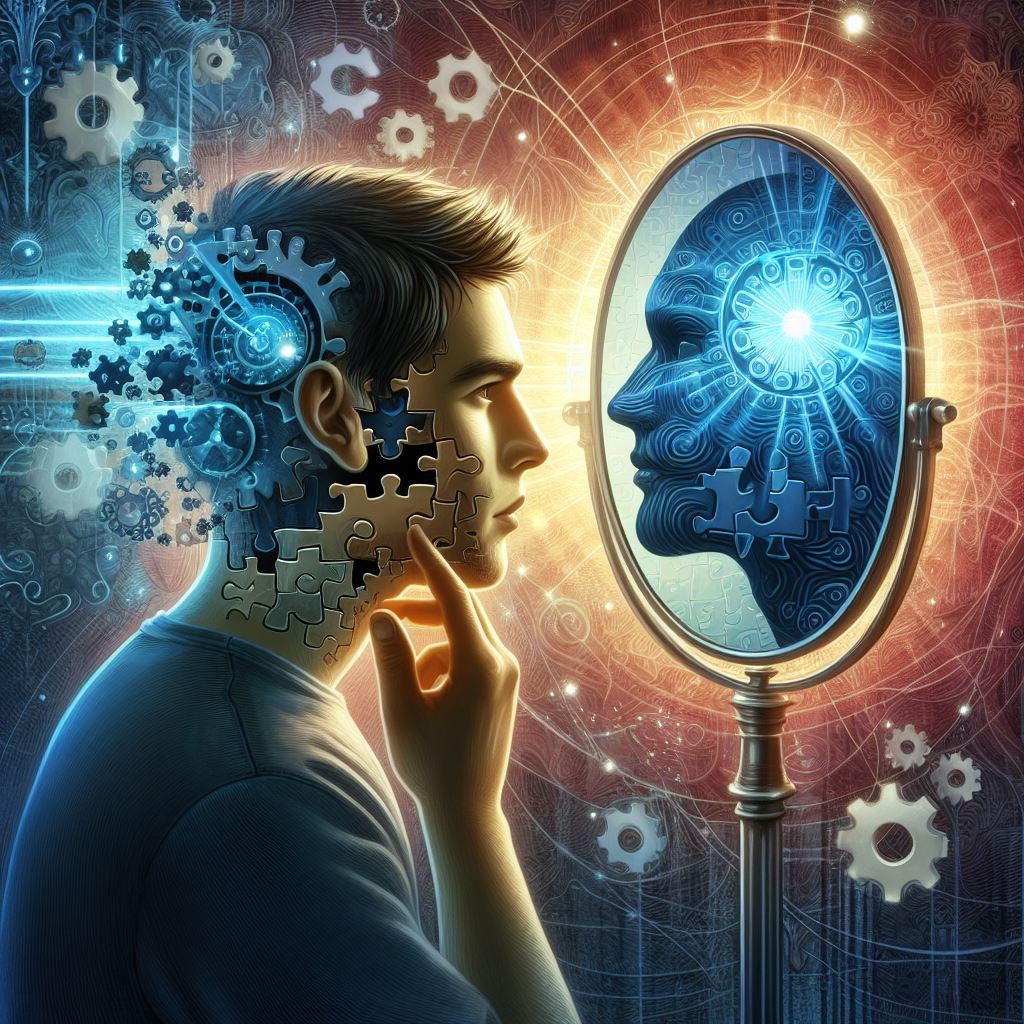
The paradox of self-awareness and how it pertains to ethics
Self-awareness is the ability to reflect on one’s thoughts, feelings, actions, and motives. It is often considered a key component of human intelligence, creativity, and morality. However, self-awareness also poses a paradox: the more we know ourselves, the more we may doubt ourselves, question our values, and struggle with existential dilemmas.
In this blog post, I will explore the paradox of self-awareness and how it pertains to ethics. I will argue that self-awareness is both a blessing and a curse for ethical decision-making and that we need to balance it with other sources of moral guidance, such as empathy, reason, and intuition.
Self-awareness and ethical challenges
One of the benefits of self-awareness is that it enables us to examine our ethical beliefs and principles and to align our actions with them. By being aware of our moral standards, we can avoid hypocrisy, inconsistency, and self-deception. We can also learn from our mistakes, improve our moral reasoning, and develop our moral character.
However, self-awareness also exposes us to ethical challenges that may not arise for less self-aware beings. For example:
– Self-awareness can lead to moral uncertainty and relativism. The more we reflect on our ethical judgments, the more we may realize that our personal biases, cultural backgrounds, social contexts, and emotional states influence them. We may also encounter conflicting moral perspectives from other people or sources of authority. This can make us doubt the validity and universality of our moral claims and undermine our confidence in making ethical decisions.
– Self-awareness can lead to moral dilemmas and trade-offs. The more we consider the consequences of our actions, the more we may face situations where there is no clear or optimal ethical choice. We may have to balance competing values, interests, rights, and duties, or choose between the lesser of two evils. We may also have to sacrifice some of our personal goals or preferences for the greater good or a moral duty.
– Self-awareness can lead to moral distress and guilt. The more we evaluate our actions against our ethical standards, the more we may realize that we have failed to live up to them. We may feel remorse for harming others, violating their rights, or regret missing opportunities to do good or fulfill our obligations. We may also feel responsible for the suffering or injustice in the world that we cannot prevent or alleviate.Balancing self-awareness with other sources of moral guidance
How can we overcome the paradox of self-awareness and make ethical decisions in a complex and uncertain world? I suggest that we need to balance our self-awareness with other sources of moral guidance that can complement and correct our self-reflection. These sources include:
– Empathy: Empathy is the ability to understand and share the feelings of others. It can help us to appreciate the perspectives and experiences of those who are affected by our actions, and to respect their dignity and autonomy. Empathy can also motivate us to care for others and to act compassionately.
– Reason: Reason is the ability to use logic and evidence to evaluate arguments and claims. It can help us to avoid fallacies and biases in our moral reasoning, and to justify our ethical judgments with rational grounds. Reason can also help us to resolve moral conflicts and dilemmas by applying universal principles and rules.
– Intuition: Intuition is the ability to sense or know something without conscious reasoning. It can help us to access our subconscious moral values and instincts, and to act spontaneously and authentically. Intuition can also alert us to potential moral problems or opportunities that we may otherwise overlook.What is the difference between empathy and intuition?
Empathy and intuition are both forms of emotional intelligence that can inform our ethical decision-making. However, they are not the same thing. Empathy is based on understanding the feelings of others, while intuition is based on sensing our feelings. Empathy requires perspective-taking and communication skills, while intuition requires self-awareness and trust in one’s gut feelings. Empathy can help us to empathize with others’ moral views, while intuition can help us to express our moral views.
Conclusion
Self-awareness is a valuable but paradoxical trait for ethics. It can help us to align our actions with our ethical standards, but it can also expose us to ethical challenges that may shake our moral confidence. To overcome these challenges, we need to balance our self-awareness with other sources of moral guidance, such as empathy, reason, and intuition. By doing so, we can make ethical decisions that are not only consistent with ourselves but also respectful of others.
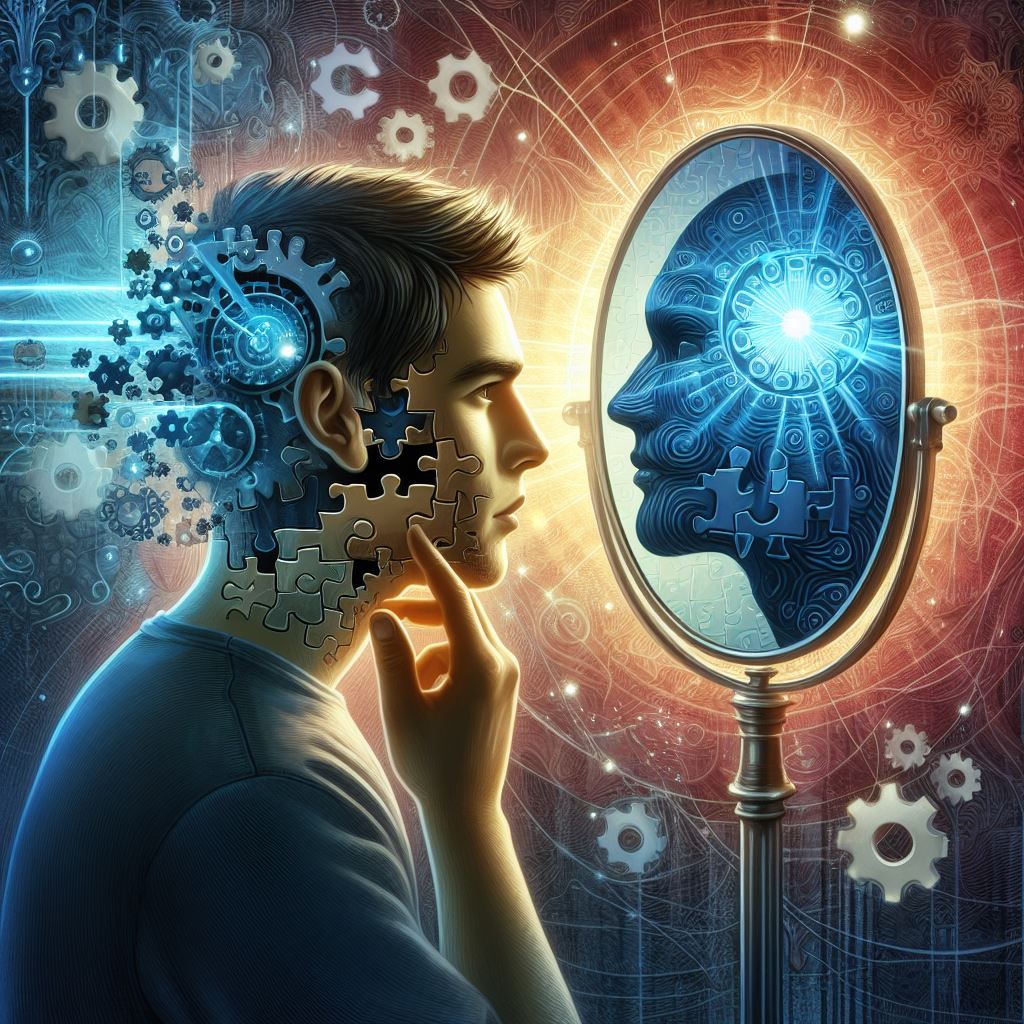

The Tuskegee Airmen: How They Influenced Aviation History

“
Lt. Col. Benjamin O. Davis, a character in the movie “The Tuskegee Airmen”:
“Every colored pilot in the 99th went through his private hell to wear those wings. Each of those men carries not only the dream of becoming American Military Aviators but the hopes of an entire people as well. Am I the only one here that understands what that means? I was brought up to believe that beneath it all Americans are a decent people with an abiding sense of integrity and fair play. The cheers I heard across this country when Joe Louis and Jesse Owens humiliated Hitler’s “Master Race” didn’t just come from proud colored folks. They came from everyone. How are we to interpret that? As a United States Army Officer who gladly puts his life on the line every day, there’s no greater conflict within me. How do I feel about my country? And how does my country feel about me? Are we only to be Americans when the mood suits you?”.
The Tuskegee Airmen: A Story of Courage and Excellence
If you are interested in the history of aviation and civil rights, you may have heard of the Tuskegee Airmen. They were the first Black aviators to serve in the U.S. military, fighting in World War II and breaking racial barriers. In this blog post, we will explore their training and challenges, their combat achievements, their impact on history, and their recognition and legacy.
Their training and challenges
The Tuskegee Airmen were part of an experiment initiated by the U.S. Army Air Corps in 1941 to train Black pilots and crew members for combat. They trained at the Tuskegee Army Air Field in Alabama, where they faced discrimination and segregation from the white military establishment. They had to overcome many obstacles and prejudices to prove their worth and ability. They were often given inferior equipment, inadequate facilities, and limited opportunities for advancement. They also had to deal with racism and hostility from some of the local communities near the base.
Despite these difficulties, the Tuskegee Airmen persevered and excelled in their training. They demonstrated their skills and dedication in various tests and exercises, earning the respect and admiration of some of their instructors and commanders. They also formed a strong bond of camaraderie and solidarity among themselves, supporting each other through thick and thin.
Their combat achievements
The Tuskegee Airmen began their combat service in 1943, flying missions in North Africa and later in Europe. They flew various types of aircraft, including P-40 Warhawks, P-39 Airacobras, P-47 Thunderbolts, and P-51 Mustangs. They performed various roles, such as escorting bombers, attacking enemy targets, and shooting down enemy aircraft.
The Tuskegee Airmen proved to be formidable fighters in the air, earning a reputation for their courage and excellence. They flew more than 15,000 missions in World War II, destroying hundreds of enemy planes, trains, vehicles, and boats. They also sank a German destroyer with machine gun fire, a rare feat for fighter pilots. They earned more than 150 Distinguished Flying Crosses and other medals for their bravery and skill.
One of their most notable achievements was that they never lost a bomber they escorted to enemy fire, a record unmatched by any other fighter group in World War II. The bombers they protected were grateful for their service and called them the “Red Tails” or the “Red-Tail Angels” because of the distinctive red paint on the tails of their planes.
Their impact on history
The Tuskegee Airmen not only influenced the outcome of World War II but also the history of aviation and civil rights in America. They showed that Black Americans could excel in aviation and military service, inspiring others to follow in their footsteps. They also influenced President Truman’s decision to integrate the armed forces in 1948, paving the way for more equality and opportunity for Black Americans in the military and beyond.
The Tuskegee Airmen also contributed to the global fight against fascism and oppression, helping to liberate millions of people from tyranny and injustice. They fought alongside allies from different countries and backgrounds, including five Haitians, one Trinidadian, and one Jamaican among their ranks, making them a diverse and international group of pilots.
Their recognition and legacy
The Tuskegee Airmen have received numerous honors and awards for their achievements and contributions, including the Congressional Gold Medal in 2007. They have also been commemorated in various monuments, museums, films, books, and songs. Their legacy continues to inspire generations of Americans to pursue their dreams and overcome adversity.
The Tuskegee Airmen are a shining example of what can be accomplished when people are given a chance to prove themselves regardless of their race or background. They are a source of pride and inspiration for all Americans who value freedom and democracy.
We hope you enjoyed this blog post about the Tuskegee Airmen. If you want to learn more about them or other topics related to World War II, please visit Tuskegee Airmen | The National WWII Museum | New Orleans.

Object Permanence and ADHD: What You Need to Know
Object permanence is the ability to understand that objects still exist even when they are out of sight. This is a cognitive skill that develops in early childhood. Some people believe that attention deficit hyperactivity disorder (ADHD) is related to problems with object permanence. They think that people with ADHD tend to forget about things or people that are not in their immediate environment. However, this is not a medically recognized symptom or diagnosis of ADHD. In this blog post, we will explain what object permanence is, what ADHD is, how they affect each other, and what strategies can help them cope.
What is object permanence?
Object permanence was first described by Swiss psychologist Jean Piaget in the 1960s. He observed how babies reacted when a favorite toy was shown to them and then hidden from them. Babies who had not developed object permanence would appear confused or upset as if the toy had disappeared. Babies who had developed object permanence would continue to look for the toy, knowing that it still existed somewhere.
According to The American Academy of Pediatrics, some babies can demonstrate an understanding of object permanence as early as 4–5 months of age. However, most infants do not grasp the concept until around 9 months old.
Object permanence is important for cognitive development because it helps children form mental representations of the world and understand the concept of causality. It also helps children develop memory, language, and problem-solving skills.
What is ADHD?
ADHD is a neurodevelopmental disorder that affects the brain’s ability to regulate attention, activity, and impulses. It can cause problems with learning, behavior, and social skills. It is one of the most common mental disorders affecting children and often lasts into adulthood.
ADHD has three main types: predominantly inattentive, predominantly hyperactive-impulsive, and combined.
- Predominantly inattentive type: People with this type have difficulty focusing, organizing, following instructions, or completing tasks. They may be easily distracted, forgetful, or make careless mistakes.
- Predominantly hyperactive-impulsive type: People with this type have difficulty sitting still, controlling impulses, or waiting their turn. They may be restless, fidgety, talkative, or interruptive.
- Combined type: People with this type have symptoms of both inattention and hyperactivity-impulsivity.
The exact cause of ADHD is unknown, but research suggests that genetics, brain structure and function, and environmental factors may play a role.
How does object permanence affect people with ADHD?
Some people have suggested that people with ADHD have problems with object permanence. They claim that people with ADHD have difficulty remembering things that are not in their sensory range, such as sight, sound, or touch. They argue that this leads to an “out of sight, out of mind” phenomenon, where people with ADHD ignore or neglect things or people that are not present.
For example, a person with ADHD may forget about their homework assignment once they leave the classroom. Or they may lose interest in their friend once they move to another city.
However, this is not a scientifically proven theory. Object permanence is not a recognized medical condition or symptom in ADHD. A person with ADHD cannot be diagnosed with object permanence problems.
The underlying cause of forgetfulness in ADHD is more likely related to poor working memory. Working memory is the ability to hold and manipulate information in your mind for a short period. It helps you perform tasks such as planning, problem-solving, decision-making, and learning.
People with ADHD have poor working memory compared to people without ADHD. This means they have trouble keeping track of multiple pieces of information at once. They may also have difficulty switching between different tasks or contexts.
Poor working memory can explain why people with ADHD forget about things or people that are not in their immediate attention. It is not because they do not understand that they still exist, but because they have trouble keeping them in their mental space.
How can people with ADHD cope with forgetfulness?
Forgetfulness can cause frustration, stress, and embarrassment for people with ADHD and their loved ones. It can also affect their performance and productivity at school or work. However, some strategies can help people with ADHD improve their memory and organization skills.
Some of these strategies include:
- Using external reminders such as calendars, alarms, timers, notes, lists, labels, or apps to keep track of important dates, tasks, or items.
- Creating routines and habits for daily activities such as getting ready in the morning, doing homework, or preparing for bed.
- Organizing your space and belongings in a way that makes sense to you and reduces clutter.
- Putting things back where they belong after using them or having designated places for frequently used items.
- Asking for help from others such as family members, friends, teachers, or coworkers when you need reminders or support.
- Seeking professional help from a doctor, therapist, coach, or tutor who can provide medication, counseling, training, or guidance for managing your symptoms.
Conclusion
Object permanence is the ability to understand that objects still exist even when they are out of sight. It is a cognitive skill that develops in early childhood. ADHD is a neurodevelopmental disorder that affects the brain’s ability to regulate attention, activity, and impulses. It can cause problems with learning, behavior, and social skills. Some people believe that ADHD is related to problems with object permanence. They think that people with ADHD tend to forget about things or people that are not in their immediate environment. However, this is not a medically recognized symptom or diagnosis of ADHD.
The underlying cause of forgetfulness in ADHD is more likely related to poor working memory. Working memory is the ability to hold and manipulate information in your mind for a short period. It helps you perform tasks such as planning, problem-solving, decision-making, and learning.
People with ADHD can cope with forgetfulness by using external reminders, creating routines, organizing their space, asking for help, and seeking professional help. These strategies can help them improve their memory and organization skills and reduce the negative impact of their symptoms on their lives.
References:
- What is ADHD? | CDC
- Psychiatry.org – What is ADHD?
- Attention-deficit/hyperactivity disorder (ADHD) in children

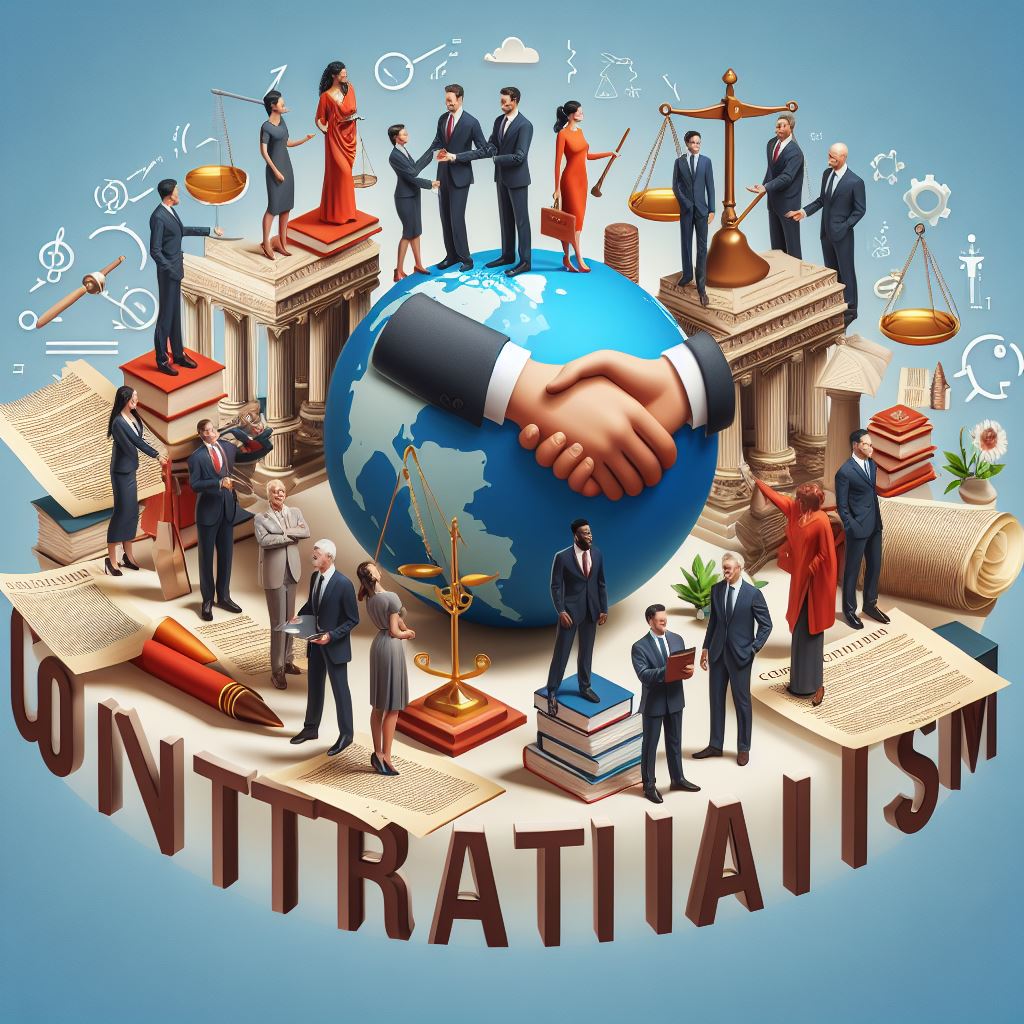
Contractarianism and Social Dynamics: A Critical Analysis
The role of Contractarianism, a philosophical theory of ethics and morality, in shaping social dynamics and interpersonal relationships is a topic that is gaining more and more importance in our society. In this blog post, I intend to elaborate on this topic by drawing examples from gender roles, emotional abuse, social media, and labeling.
Contractarianism is the idea that the moral and ethical status of actions depends on agreements between rational agents. In other words, what is right or wrong is determined by what people agree to do or not to do. This theory can help us understand why some social norms or behaviors persist, even when they are harmful or irrational.
To provide a better understanding of this theory, let us delve into the history of Contractarianism. Contractarianism has its origins in the social contract theories about the legitimacy of political authority, which were prominent in the 17th and 18th centuries. These theories were developed during the Enlightenment period when traditional values were being questioned. Some of the most influential social contract theorists were Thomas Hobbes, John Locke, Jean-Jacques Rousseau, and Immanuel Kant.
Hobbes was the first to propose a contractarian theory of morality, based on the idea that rational individuals would agree to certain rules of conduct in order to escape the state of nature, a condition of perpetual war and insecurity. Hobbes argued that morality is grounded in self-interest and prudence, rather than natural law or divine command.
Locke and Rousseau modified Hobbes’ theory by introducing the notion of natural rights and the general will, respectively. Locke argued that individuals have inherent rights to life, liberty, and property, which they transfer to a limited government in exchange for protection. Rousseau argued that individuals have a natural inclination to freedom and equality, which they express through a collective agreement that reflects the common good.
Kant developed a different kind of contractarian theory, based on the idea that rational individuals would agree to universal moral principles that are derived from pure reason. Kant argued that morality is grounded in autonomy and dignity, rather than utility or consent.
In moral theory, contractarianism takes primarily two forms along the two different lines of moral thinking started by Hobbes and Kant, respectively. The first form is based on the idea that morality is justified by what rational individuals would agree to under certain hypothetical conditions, such as ignorance or impartiality. The second form is based on the idea that morality is justified by what rational individuals would agree to under actual conditions, such as mutual recognition or reciprocity.
Now, let us consider the gender roles and stereotypes that are prevalent in society. These are the result of a long history of cultural norms and power dynamics that have created a set of implicit social “contracts” that define what is expected of men and women. These contracts may not have been explicitly negotiated, but they influence every aspect of our lives, from work to romance.
One area where these social contracts have significant consequences is in emotional abuse within relationships. Emotional abuse is any behavior that causes psychological harm to another person, such as manipulation, humiliation, isolation, or gaslighting. Often, abusers are not even aware that their actions are abusive, because the social contracts that govern interpersonal relations have not identified these behaviors as wrong. In fact, some social norms may even justify or encourage harmful behavior.
Social media is a new domain where these traditional contracts are both challenged and reinforced. On the one hand, social media platforms allow for the expression of diverse views and experiences, which can potentially challenge existing norms and contracts. On the other hand, social media also creates echo chambers where people only interact with those who share their opinions, which can reinforce harmful norms and contracts.
Furthermore, social media platforms can provide a space for the development of new social contracts. For example, social media can be used to promote progressive ideas and challenge existing social norms. The #MeToo movement is an excellent example of how social media can be used to challenge harmful social norms and contracts.
Another way that social contracts shape our lives is through labeling. Labeling is the act of assigning terms like “normal” or “weird” to individuals or groups based on their conformity or deviation from social norms. These labels, often arbitrary and subjective, serve to reinforce societal contracts without any rational ethical basis.
It is essential to acknowledge that social contracts are not always just or ethical. Therefore, we should always question and challenge the social contracts that we encounter, and seek to create new ones that are more just and humane.
To challenge harmful social norms, one possible way is to educate ourselves and others about the origins and effects of these norms. Another way is to speak up and act against injustice and oppression when we witness them. A third way is to support and ally with those who are marginalized or discriminated by these norms. By doing so, we can create a more inclusive and respectful society for everyone.
In conclusion, Contractarianism can offer a useful lens to examine how social dynamics and interpersonal relationships are influenced by agreements between rational agents. While social contracts can be beneficial in creating order and stability in society, we must remain vigilant and question the ethical implications of these contracts. It is only by doing so that we can create a more just and humane society for everyone.
As we continue to navigate our rapidly changing world, it is essential to keep in mind the ways in which social norms and contracts impact our lives. By paying attention to the agreements that we make with one another and the norms that we follow, we can better understand the root causes of social issues and work towards creating a more equitable and just society. This requires us to be critical of the existing social contracts that we encounter and to actively seek out new and more ethical ways of interacting with one another. With continued effort, we can create a world that is more compassionate, inclusive, and just for all.

